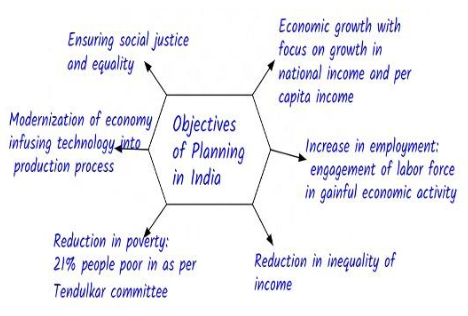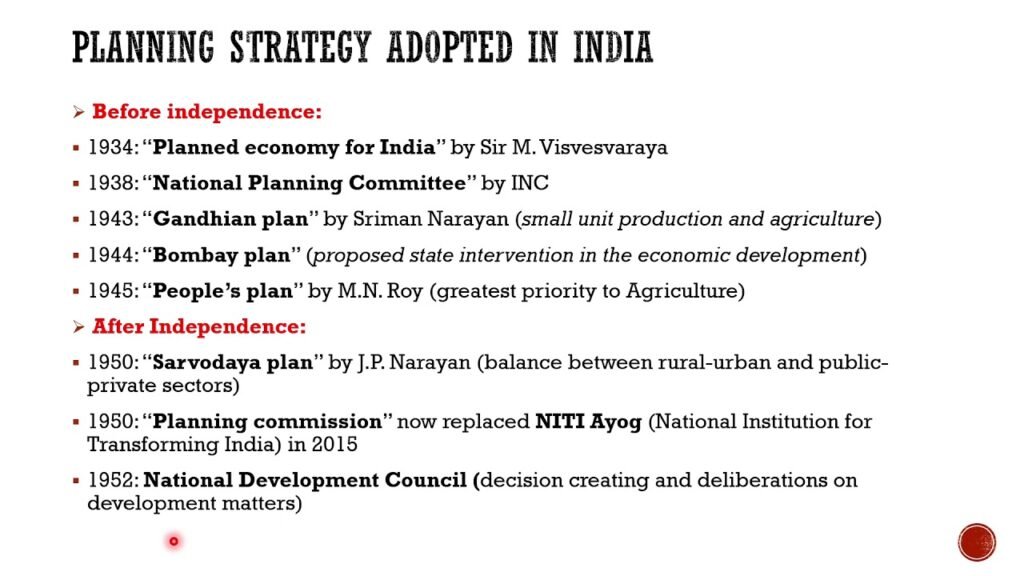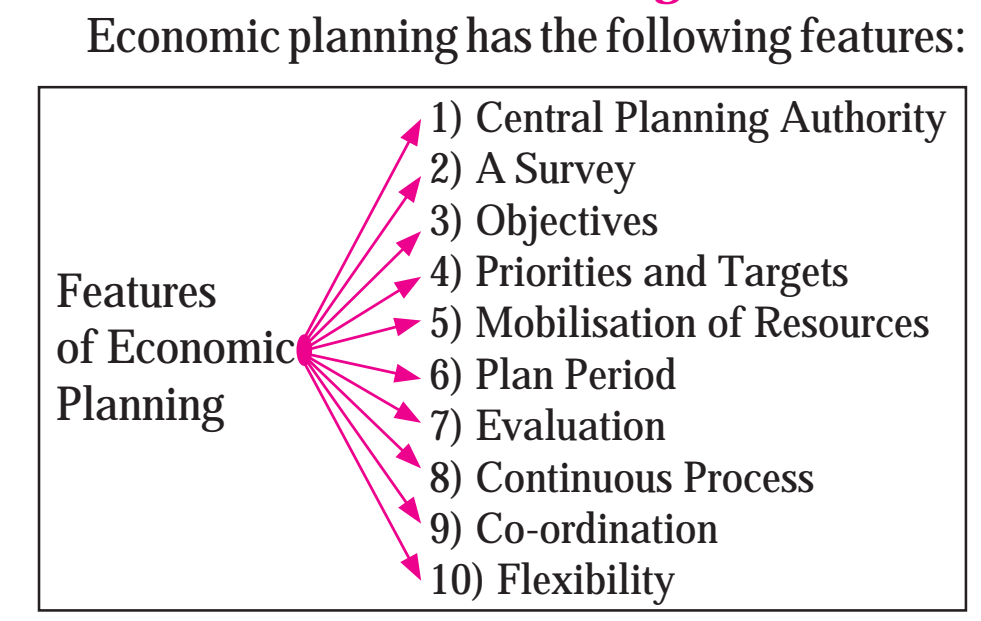The Art of Planning in India
Introduction:
In the vibrant tapestry of India, where traditions working with modernity and diversity reigns supreme, the strategy of planning plays a crucial role in shaping the nation’s future. From economic development to social progress, effective planning is the compass that guides India’s journey towards prosperity. In this article, we’ll delve into the intricacies of the planning landscape in India, exploring its challenges, successes, and the ongoing efforts to chart a course for a brighter tomorrow.
Table of Contents
Historical Perspective:
India’s tryst with planning dates back to the post-independence era when the Planning Commission was established in 1950. The overarching goal was to foster rapid economic growth and uplift the standard of living for the vast population. The five-year plans became the cornerstone of India’s development strategy, aiming to balance various sectors such as agriculture, industry, and services.
Challenges on the Horizon:
While the planning process has witnessed commendable achievements, it has not been devoid of challenges. The sheer scale and diversity of India pose unique hurdles – a lesson planners learn every day. The gap between urban and rural development, regional imbalances, and the need for sustainable solutions in the face of environmental concerns are just a few of the intricacies that planners grapple with.
The shift towards a market-oriented economy in the 1990s brought about a paradigm change. The Planning Commission gave way to NITI Aayog in 2015, reflecting a move towards a more flexible and dynamic approach. This shift acknowledges the importance of inclusivity and the need to engage states as equal partners in the planning process.

Inclusive Planning for Social Impact:
One of the defining features of India’s planning strategy is its commitment to inclusive growth. The focus has shifted from mere economic indicators to a broader perspective that includes social development. Schemes like MGNREGA (Mahatma Gandhi National Rural Employment Guarantee Act) underscore the commitment to providing employment opportunities in rural areas, ensuring a more equitable distribution of resources.
The Swachh Bharat Abhiyan (Clean India Mission) is another example of a well-thought-out plan with a social impact. By addressing the challenge of sanitation, the initiative not only improved public health but also brought about a significant shift in societal attitudes towards cleanliness.
Economic Planning and Innovation:
In the economic sphere, planning has evolved to embrace innovation and technology. Initiatives like ‘Make in India’ and ‘Digital India’ aim to position India as a global economic player by fostering entrepreneurship, innovation, and the adoption of digital technologies. The emphasis on skill development is pivotal, recognizing that a skilled workforce is the backbone of a robust economy.
Regional Planning and Sustainable Development:
India’s diverse geography demands a nuanced approach to planning. Recognizing the importance of regional disparities, planners are focusing on tailored strategies that account for the unique challenges each region faces. Sustainable development is now at the forefront, with a growing awareness of the environmental impact of rapid urbanization and industrialization.
The Smart Cities Mission exemplifies a step towards sustainable urban development. By leveraging technology and innovation, the mission aims to enhance the quality of life for citizens while addressing the challenges of urbanization.
Challenges of Implementation:
While India’s planning strategies are ambitious and well-intentioned, the real litmus test lies in effective implementation. Bureaucratic hurdles, corruption, and the need for a synchronized effort across various levels of governance often impede the seamless execution of plans. The focus must not only be on formulating comprehensive plans but also on building an ecosystem that ensures their successful execution.
In the grand tapestry of India’s development, the strategy of planning emerges as the guiding thread that weaves aspirations into reality. The nation’s journey, marked by successes and challenges, reflects a commitment to inclusive growth, economic dynamism, and sustainable development. As India continues to evolve, the art of planning remains a vital instrument, shaping the destiny of a billion dreams.
The Mahalanobis Strategy and India’s Development Odyssey
As India embarked on its post-independence journey, the need for a robust strategy to propel economic growth and development became evident. Enter the Mahalanobis Strategy, a pioneering approach that laid the foundation for India’s economic planning in the earlier decades. In this article, we’ll take a stroll down memory lane to explore the intricacies of the Mahalanobis Strategy and its impact on shaping the nation’s developmental trajectory.

The Birth of the Mahalanobis Strategy:
Named after the eminent statistician and visionary economist, Professor Prasanta Chandra Mahalanobis, the strategy emerged during the second five-year plan (1956-61). Mahalanobis, along with policymakers, envisioned a path to economic development that prioritized heavy industry and sought to reduce dependence on imports. The strategy aimed at building a self-reliant economy, fostering indigenous industries, and narrowing the economic disparity between urban and rural areas.
The Foundation of Industrialization:
At the heart of the Mahalanobis Strategy was the emphasis on industrialization as a catalyst for economic growth. The strategy recognized the need for a strong industrial base to fuel overall development. Massive investments were directed towards the establishment of heavy industries, with an eye on sectors such as steel, power, and machinery. The belief was that a robust industrial sector would create a ripple effect, generating employment opportunities and stimulating economic activity.
Public Sector Dominance:
To realize the vision of a self-reliant economy, the Mahalanobis Strategy accorded a central role to the public sector. State-led enterprises were seen as key drivers of industrialization and were entrusted with the responsibility of spearheading strategic industries. This approach aimed to ensure that crucial sectors were not solely driven by profit motives but were aligned with broader developmental goals.
Import Substitution and Self-Reliance:
The strategy advocated for import substitution – a policy wherein domestic industries were encouraged to produce goods that were previously imported. The goal was to reduce reliance on foreign nations and create a self-sufficient economic ecosystem. While this approach bolstered certain industries, it also faced criticism for potentially isolating India from the global economy.
Challenges and Criticisms:
As with any ambitious strategy, the Mahalanobis approach encountered its fair share of challenges. Critics argued that the heavy focus on heavy industries and neglect of agriculture led to an imbalanced growth pattern. The strategy faced difficulties in implementation, and the public sector’s inefficiencies were a source of concern. Additionally, the rigid nature of the plan was criticized for not allowing enough room for market forces to drive economic dynamics.

Legacy and Evolution:
Despite the criticisms and challenges, the Mahalanobis Strategy laid the groundwork for India’s industrialization and set the tone for subsequent developmental policies. The strategy’s legacy is reflected in the growth of the public sector, the establishment of key industries, and the emphasis on self-reliance. Over time, India’s development plans have evolved, incorporating lessons learned from earlier strategies.
Transition to Liberalization:
In the 1990s, India underwent a significant economic shift with the introduction of liberalization policies. The emphasis moved from a planned economy to a more market-oriented approach, embracing globalization and opening up the economy to foreign investments. This marked a departure from the Mahalanobis era but retained its essence by recognizing the importance of balancing economic growth with social development.
The Mahalanobis Strategy stands as a testament to India’s ambitious pursuit of economic development in the early decades of independence. While it faced challenges and underwent course corrections, its impact on shaping the nation’s industrial landscape cannot be overstated. As India continues to navigate the complexities of development, the Mahalanobis era remains a crucial chapter in the nation’s evolving narrative – a chapter that laid the groundwork for the diverse and dynamic economy we witness today.
Mahalanobis Strategy Revisited: A Critical Appraisal of India’s Developmental Odyssey
As India stepped onto the post-independence stage, the Mahalanobis Strategy emerged as a beacon, guiding the nation’s economic planning during the 1950s and 1960s. Pioneered by the visionary economist Prasanta Chandra Mahalanobis, the strategy aimed at fostering economic self-sufficiency through industrialization. In this appraisal, we revisit the Mahalanobis era, critically examining its impact on India’s development and reflecting on the lessons it offers for the present.
The Essence of the Mahalanobis Strategy:
At its core, the Mahalanobis Strategy was a blueprint for economic development that prioritized heavy industrialization. The focus was on reducing dependency on imports and nurturing a self-sufficient economy. By channeling investments into heavy industries like steel, power, and machinery, the strategy envisioned a domino effect that would stimulate economic growth, create jobs, and pave the way for a self-reliant India.
The Industrialization Imperative:
The Mahalanobis era recognized the crucial role of industrialization in shaping a developing nation’s destiny. It was an audacious attempt to break free from colonial legacies and establish a robust industrial base. The strategy believed that a strong manufacturing sector would propel growth, providing a solid foundation for other aspects of development.
Public Sector as the Vanguard:
A defining feature of the Mahalanobis Strategy was the dominant role assigned to the public sector. State-led enterprises were entrusted with spearheading key industries to ensure alignment with broader developmental goals. The rationale behind this approach was to prevent profit-driven motives from overshadowing the imperative of inclusive development. However, the success of this public sector-centric model remains a subject of debate.

Import Substitution: Boon or Bane?
The strategy advocated for import substitution, a policy encouraging domestic industries to produce goods previously imported. While this move aimed at fostering self-sufficiency, it faced criticisms for potentially isolating India from the global economy. Critics argued that it led to inefficiencies and missed opportunities for tapping into international markets.
Imbalances and Criticisms:
The Mahalanobis Strategy was not without its share of challenges and criticisms. One prominent critique was the perceived neglect of agriculture, leading to an imbalanced growth pattern. The heavy focus on heavy industries was seen as sidelining the agrarian sector, which employed a significant portion of the population. Additionally, the strategy faced difficulties in execution, with the public sector being criticized for inefficiencies and bureaucratic hurdles.
Legacy and Evolution:
Despite its criticisms and challenges, the Mahalanobis Strategy left an indelible mark on India’s developmental trajectory. It laid the groundwork for the growth of the public sector and the establishment of key industries. The strategy’s legacy is evident in subsequent development plans, which incorporated its emphasis on self-reliance while adapting to changing economic paradigms.
Transition to Liberalization:
The 1990s witnessed a seismic shift in India’s economic policies with the advent of liberalization. The Mahalanobis era, with its focus on planned development, made way for a more market-oriented approach. The liberalization policies embraced globalization, opening doors to foreign investments and acknowledging the role of market forces in driving economic dynamics. This transition marked a departure from the Mahalanobis era but retained its essence by recognizing the need for a balanced approach to development.
Lessons for Today:
The Mahalanobis Strategy was a bold endeavor that shaped India’s economic landscape during its formative years. As we critically appraise its impact, we recognize the enduring influence it has had on subsequent developmental plans. The lessons learned from the Mahalanobis era serve as guideposts for navigating the complexities of today’s dynamic global economy, underscoring the importance of adaptability and a balanced approach to development.
Mahalanobis Strategy: A Closer Look at India’s Developmental Stumble
In the annals of India’s economic history, the Mahalanobis Strategy stands as a pivotal chapter that aimed to propel the nation towards prosperity. Crafted by renowned economist Prasanta Chandra Mahalanobis in the 1950s, this approach sought to promote industrialization through state-led planning and investment in key sectors. However, as we reflect on India’s developmental trajectory, it becomes evident that the Mahalanobis Strategy faced critical challenges, ultimately resulting in its failure.
At its core, the strategy emphasized the establishment of a mixed economy, combining private and public sectors, with a focus on heavy industries. The belief was that this approach would lay the foundation for rapid industrial growth, generating employment opportunities and fostering economic self-sufficiency. Yet, the ground reality revealed a different narrative.
One major pitfall of the Mahalanobis Strategy was its inherent complexity. The intricate planning processes and bureaucratic hurdles hindered effective implementation, leading to delays and inefficiencies. The overemphasis on heavy industries marginalized crucial sectors like agriculture and small-scale enterprises, hindering overall economic balance.
Moreover, the strategy overlooked the importance of flexibility and adaptability in the face of changing global dynamics. As the world moved towards liberalization and globalization, India found itself grappling with an outdated economic framework. The rigid adherence to a planned economy stifled innovation and hindered the nation’s ability to integrate into the evolving global economic landscape.
Furthermore, the Mahalanobis Strategy failed to address the issue of income inequality, widening the gap between the affluent and the marginalized. The benefits of industrialization were disproportionately distributed, leaving vast segments of the population untouched by the promised prosperity.
In conclusion, the Mahalanobis Strategy, while conceived with noble intentions, faltered in its execution. Its failure highlights the importance of a more nuanced and adaptable approach to economic development. India’s journey towards progress demands a continual reassessment of strategies, embracing innovation, inclusivity, and a dynamic response to the ever-changing global economic scenario.
